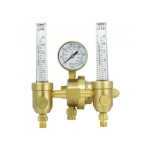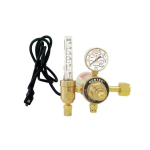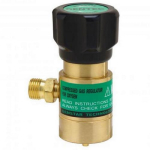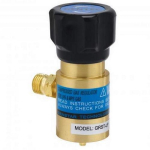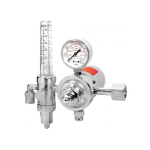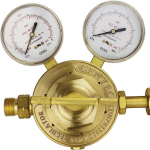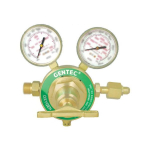What types of gas regulators are available, and what are their applications?
Gas regulators come in various types, including single-stage, dual-stage, flowmeter, and high-flow models. Single-stage regulators reduce pressure in one step, suitable for most general applications. Dual-stage regulators provide more precise control by reducing pressure in two stages, ideal for laboratory and analytical work. Flowmeter regulators combine pressure regulation with flow measurement, often used in welding and industrial processes. High-flow regulators are designed for applications requiring higher gas flow rates.
How do I choose the right gas regulator for my needs?
Choosing the right gas regulator depends on several factors:Gas Type: Ensure compatibility with the gas being used (e.g., oxygen, acetylene, argon).Pressure Requirements: Match the regulator’s inlet and outlet pressure capabilities with your system’s requirements.Flow Rate: Select a regulator that can handle the required flow rate for your application.Application: Consider specific needs, such as precision control for lab work or high flow for industrial processes. Consulting product specifications and manufacturer recommendations can help you make an informed decision.
What are the key features to look for in a high-quality gas regulator?
High-quality gas regulators should include:Durability: Made from robust materials like brass or stainless steel to withstand high pressure and harsh environments.Precision Control: Accurate pressure and flow control for consistent performance.Safety Features: Built-in safety mechanisms such as pressure relief valves to prevent overpressure.Ease of Use: Clear gauges, easy adjustments, and reliable fittings for user convenience. Brands like Gentec offer regulators that meet these criteria, ensuring reliability and safety.
How do I maintain and troubleshoot my gas regulator?
Proper maintenance and troubleshooting include:Regular Inspections: Check for leaks, wear, and damage. Replace worn-out parts promptly.Cleaning: Keep the regulator clean, especially around the connections and gauges.Calibration: Periodically check and calibrate to ensure accurate readings.Troubleshooting: If the regulator is not maintaining pressure, check for blockages, leaks, or damaged components. Consult the user manual or a professional for specific issues. Following these practices can extend the life and ensure the safe operation of your regulator.
Are there specific safety precautions I should take when using gas regulators?
Yes, safety is crucial when using gas regulators:Proper Installation: Ensure the regulator is correctly installed according to the manufacturer’s guidelines.Leak Testing: Regularly test for leaks using soapy water around connections.Correct Usage: Use the regulator only with the gas it is designed for and within its specified pressure range.Protective Gear: Wear appropriate protective gear, such as gloves and safety goggles, during installation and use. Adhering to these precautions helps prevent accidents and ensures safe, efficient operation.
